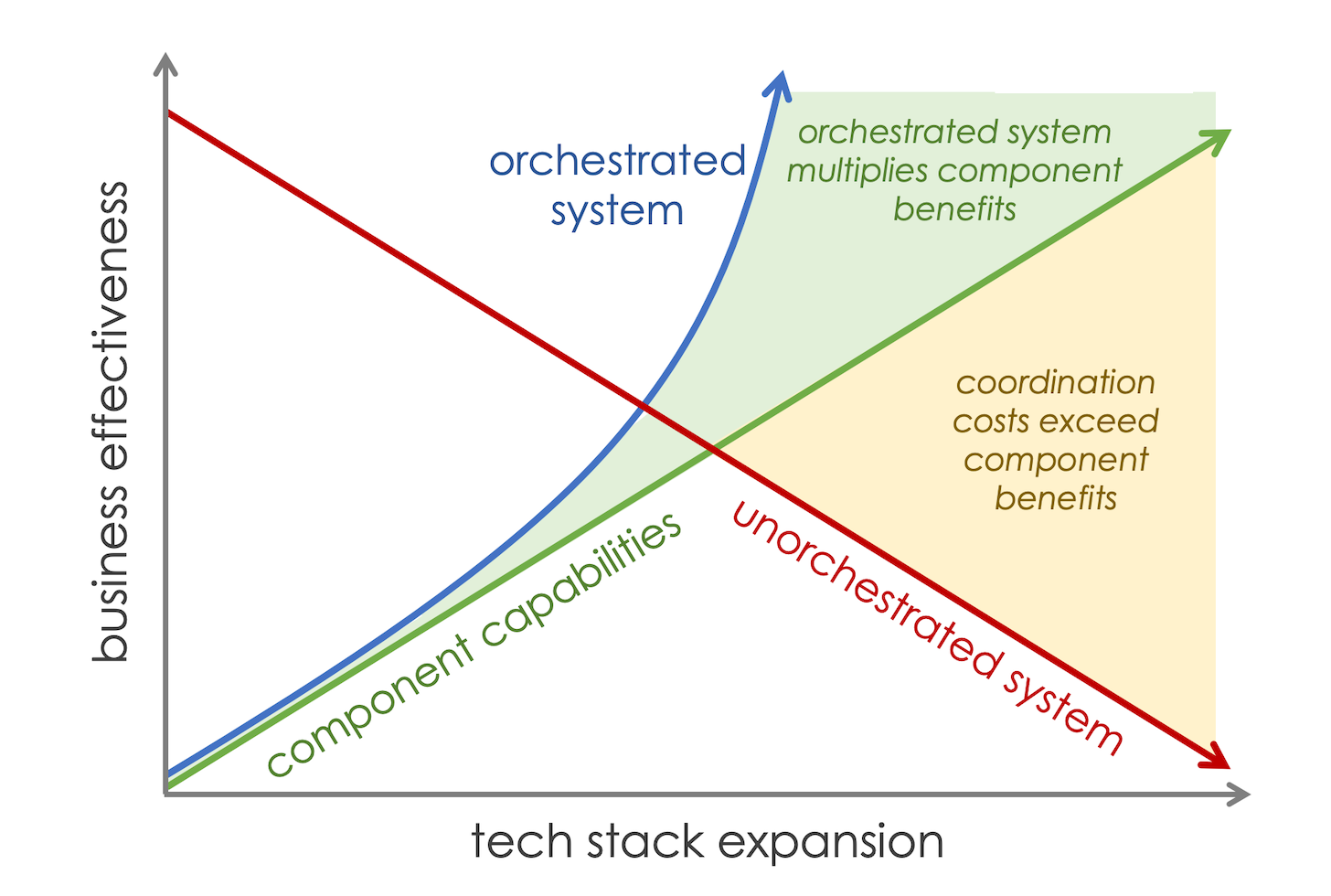Have we entered a post-agile marketing age?
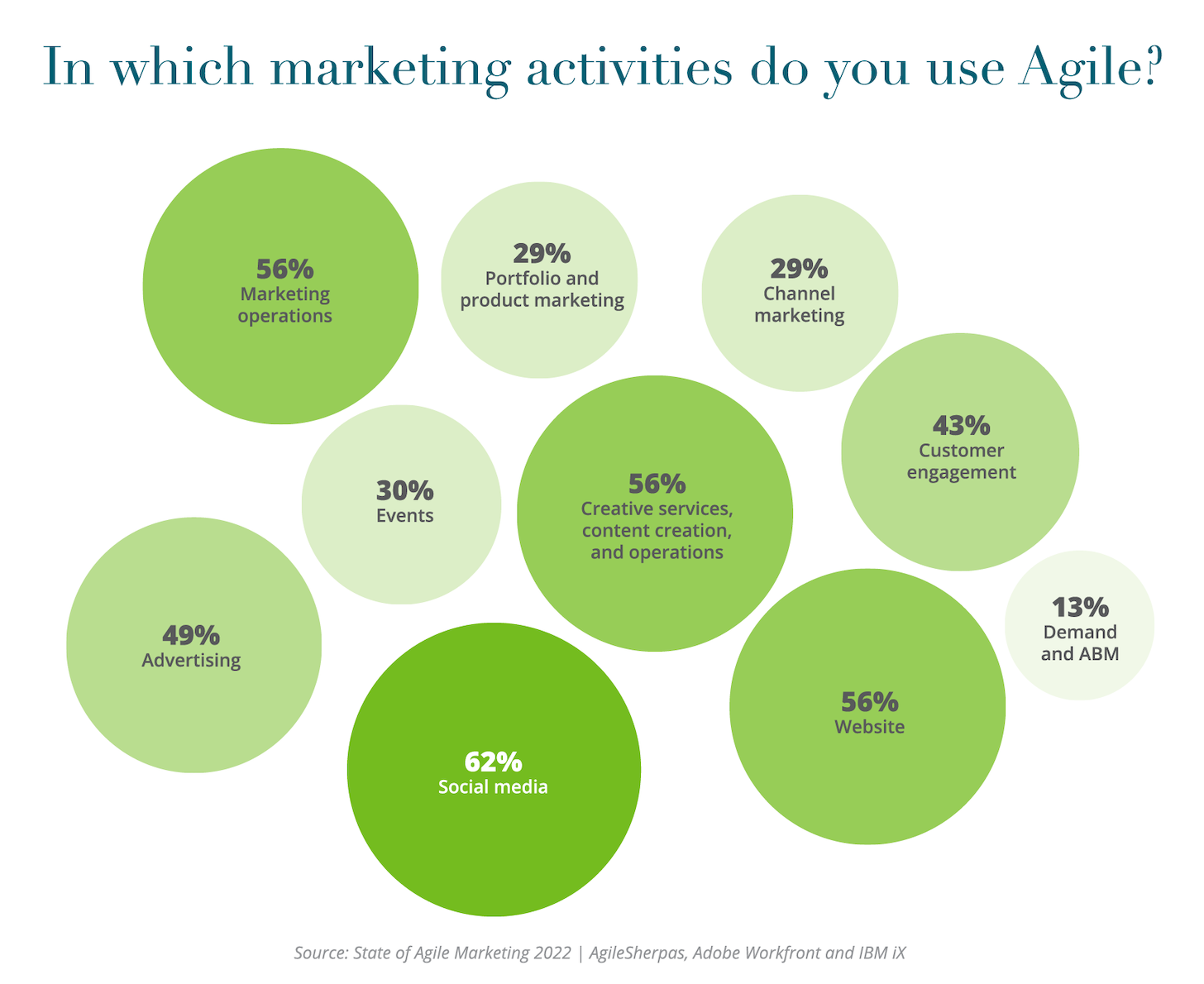
Catching up on my backlog of information and subject areas from in advance of #MartechDay before this thirty day period — which featured the 2022 marketing and advertising technological innovation landscape and the 2022 Stackies — the prime of my listing is the most up-to-date Condition of Agile Marketing and advertising report from AgileSherpas.
As always, this is a fantastic, in depth report on how and why agile methodologies are becoming applied in internet marketing. You can see from the chart earlier mentioned that agile has uncovered its way into a broad range of internet marketing functions: marketing and advertising functions, inventive expert services, site functions, social media, promoting, and so on.
It’s even being used (30%) in activities marketing, which has very long been the go-to example for skeptics: “Oh, agile could by no means get the job done for occasions.” (To be truthful, in a digital/hybrid party globe, the pacing and adaptability of activities promoting has greater considerably.)
But in contrast to previous calendar year, when 51% of contributors noted applying agile promoting, this time only 43% did. That’s close to the 42% from 2020. Is agile marketing and advertising backsliding?
Of training course, the most obvious disclaimer is the study sample. Even with 513 entrepreneurs collaborating in this most current study, it is even now a extremely modest subset of the various internet marketing universe and no doubt matter to the ebbs and flows of selection bias.
But nonetheless. After approximately 15 many years of advocacy for agile promoting, the momentum of this movement seems… stalled?
Agile advertising rules, procedures & labels
The rules of agile promoting, having said that, appear to be universally accepted as gospel fact these times. I cannot imagine of a solitary marketer I have fulfilled in the earlier numerous years who hasn’t embraced the values of adaptability, discovering from experimentation, iterative advancement, cross-group collaboration, greater visibility into work-in-flight, staff empowerment, etcetera.
Internet marketing has turn into an agile occupation. Full prevent.
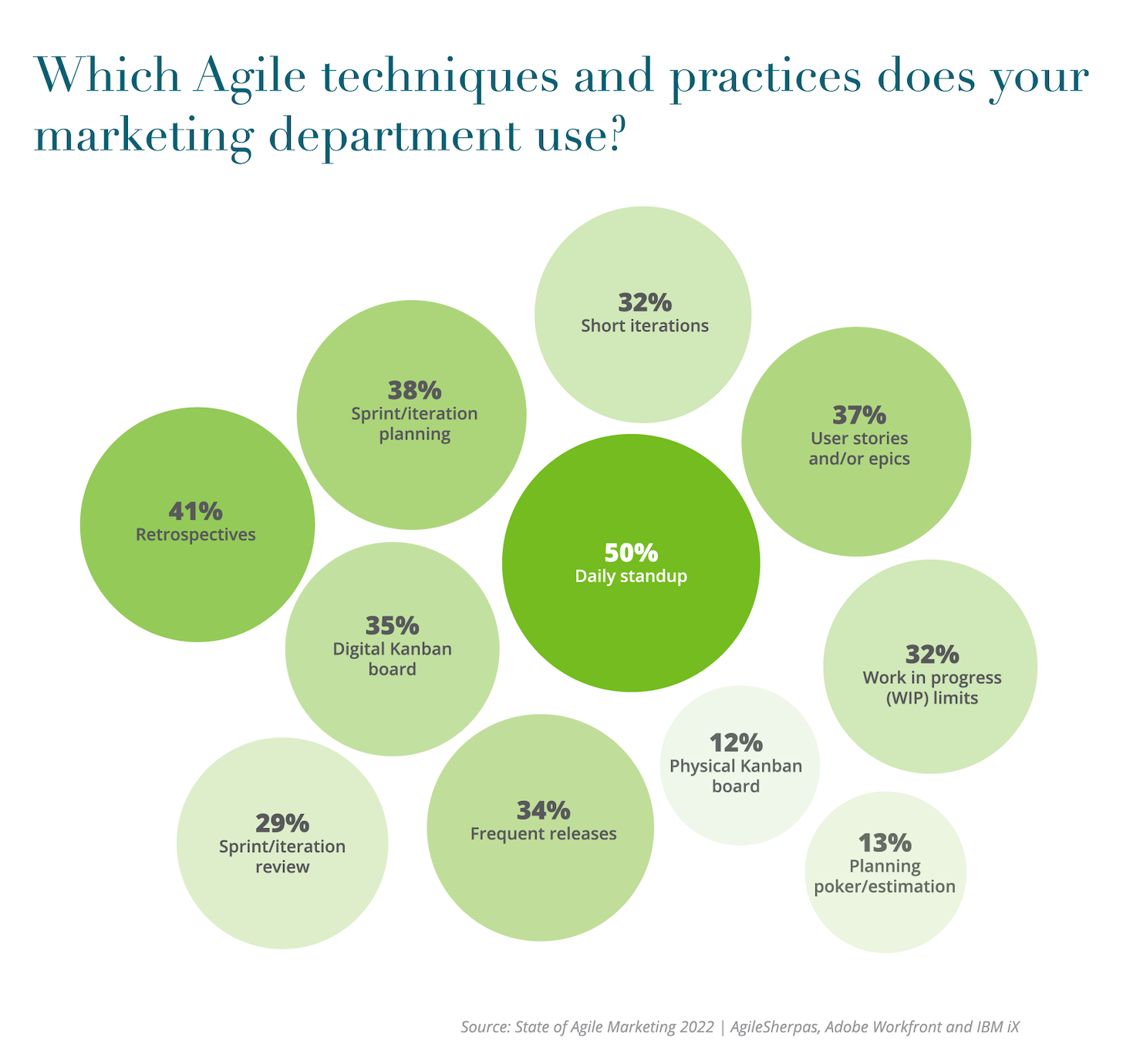
Vintage agile techniques — such as sprints, day-to-day standups, kanban boards, etc. — also feel to have proliferated broadly. Although in many situations, they’ve morphed from their first sort. We’ll appear back to that in a minute, as I believe it’s the twist of submit-agile.
But the labels? Not so much. I extremely rarely hear the phrases sprint, standup, or kanban in advertising conversations. Even “agile marketing” as a time period occurs less frequently than it appeared a couple of many years ago.
Agile marketing and advertising vs. agile development tendencies
A few of charts from Google Developments aid illustrate what is happening in this article. To start with, let us just seem at the advancement of the search time period “agile marketing”:

The chart shows relative look for volume for this phrase more than the earlier 18 a long time. You can see that it peaked close to 2017. (A year immediately after the release of Hacking Internet marketing. Coincidence?) Considering that then, it is had fluctations up and down. But it largely hit a ceiling.
To get a superior feeling of how a great deal complete look for volume there is for agile internet marketing, you need to compare it versus another trend. So let us look at it against its progenitor, “agile development”:
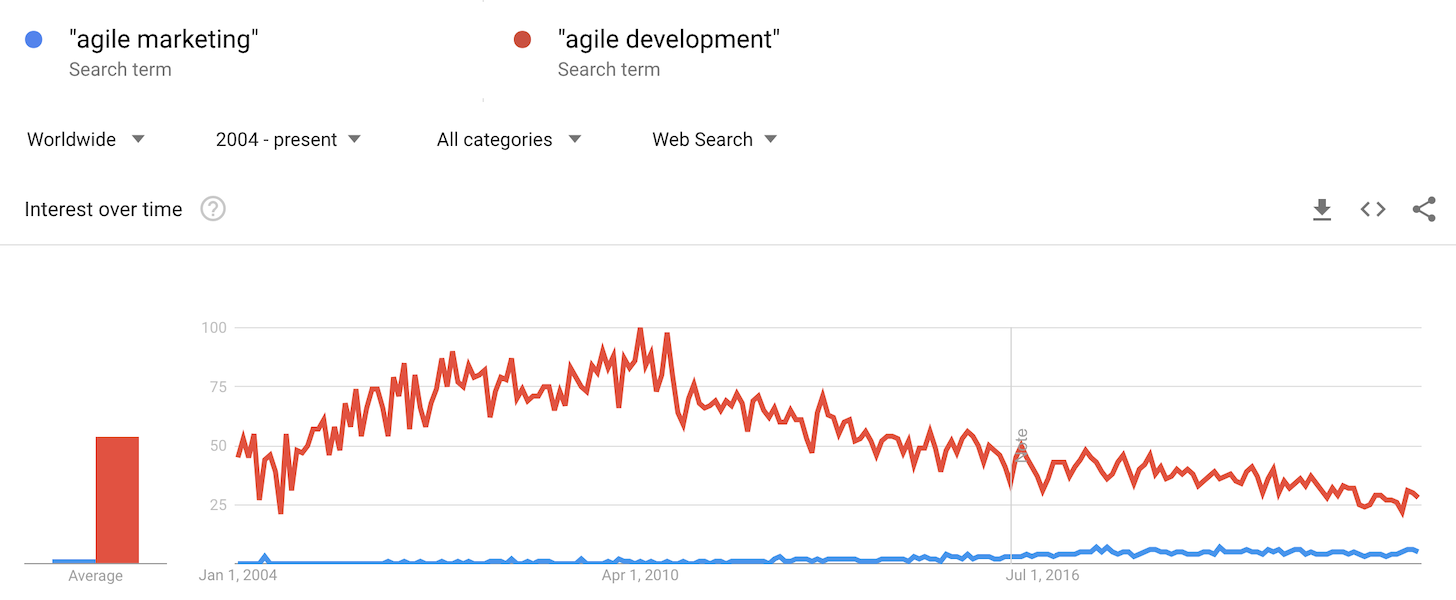
Two things pop ideal out. Initially, agile advertising and marketing has obtained only a very small fraction of the mindshare that agile improvement ever did. Next, fascination in agile enhancement has steadily declined considering the fact that 2010. It’s all over 1/4 of the volume it was at its peak.
What took place in 2010? The increase of DevOps.
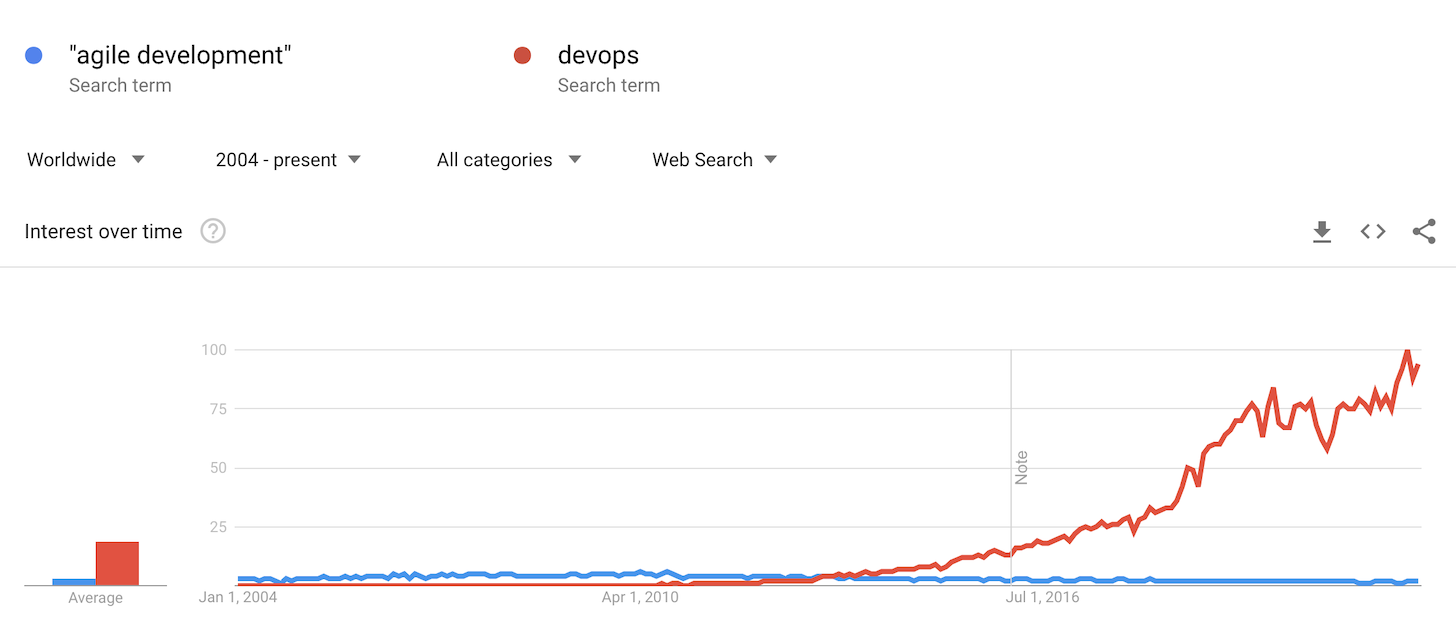
In fact, DevOps grew to become the big that stood on the shoulders of agile improvement. Its acceptance has dwarfed agile development, even from its heyday. And compared to people two, agile advertising and marketing would scarcely even sign up on the scale.
But it’s critical to notice that DevOps arose from Agile. To quotation its Wikipedia report:
“Agile improvement teams… couldn’t ‘satisfy the consumer by means of early and steady shipping of beneficial software’ unless of course they subsumed the operations / infrastructure obligations connected with their programs, numerous of which they automatic.”
DevOps “aims to shorten the techniques improvement lifecycle and provide ongoing supply with substantial application top quality.” What is steady integration/ongoing deployment (CI/CD) if not the best system for delivering iterative application enhancement?
As Forrest Gump may say, “Agile is as agile does.”
The plummeting expenditures of “shipping” in the cloud
To be obvious, DevOps is not an agile administration methodology. It’s not even an “ops” staff (in most situations) like other ops functions, this kind of as marketing ops. Rather, it’s a set of practices, processes, and know-how that builders use to ship application rapidly, iteratively, and safely and securely. It leverages a ton of automation and instrumentation.
DevOps optimizes setting up and deploying application, but determining what to construct and when still requirements to take place at a stage over that. In theory, agile enhancement methodologies this kind of as Scrum can supply the framework for all those conclusions. But most dev groups I know do not explicitly use all those methodologies anymore. Most have invented their own approach, pulling concepts from agile methodologies and adapting them and leveraging dev project management resources such as Jira.
My get: DevOps — and more broadly, the cloud — has radically lessened the prices of iteratively creating software package. Back in the times when agile methodologies these types of as Scrum were being designed, the costs and complexities of transport ended up much higher. The rigid composition of Scrum was an helpful and required way to regulate that. Right now in a good DevOps environment? Not as needed?
That’s not to say that method, organizing, roadmaps, prioritization, and all the coordination and collaboration needed all-around them are not needed. They’re as critical to success as at any time. But the rigidity of Scrum in translating that into iterative launch cycles? Not as important?
(Let the flames from ardent agile advocates begin.)
Is there a DevOps equivalent in marketing?
Advertising and marketing ops is a distinct variety of creature that DevOps. For one particular, it is a purpose/group within the internet marketing org, instead than a exercise/process that all marketers use.
Nonetheless there is some shared DNA. In quite a few approaches, promoting ops groups purpose as a DevOps-like enabler for entrepreneurs to be able to “ship” marketing promptly, iteratively, and securely. Marketing and advertising ops manages the tech stack and procedures to permit that — through a ton of automation and instrumentation.
However with the increase of much more and more no-code capabilities across martech, advertising ops is also empowering marketers with a lot more and extra self-provider capabilities. Just as program deployment ops obtained “shifted left” (i.e., moved upstream) into much more developers’ fingers with DevOps, much more capabilities to execute advertising and marketing — both of those inner and exterior advertising “deployments” — are being shifted into the palms of basic entrepreneurs.
I don’t know that there’s a identify for this phenomenon. It is a sort of democratization of specific aspects of promoting ops. (Preferably beneath the advice, governance, and guardrails of the qualified promoting ops group.) But it is more and more analogous to DevOps. Far more persons can ship a lot more promoting, quickly, quickly, and safely and securely.
Just as with application, approach, scheduling, roadmaps, prioritization, team coordination and collaboration are vital to successfully harness this dispersed electrical power of development. But just as in the same way, the fees in deploying most varieties of marketing have dropped significantly about the past decade. This has developed additional slack in the advertising manufacturing course of action, which has made rigid agile promoting methodologies… not as essential?
(Actually posed as a query, not a declaration.)
New agile procedures: Pods, DARCIs, Slack, “Work OS”
Talking of slack, or, um, Slack, the past 10 a long time has also introduced an explosion of innovation in get the job done communications and collaboration merchandise. For occasion, Slack and Microsoft Teams have turn out to be ubiquitous — along with a whole ecosystem of applications that increase and combine with them. A new era of work management platforms, these kinds of as Asana, ClickUp, Monday.com, and (for entrepreneurs) Workfront, supply larger framework and visibility into intricate, fast-shifting priorities, tasks, and workflows.
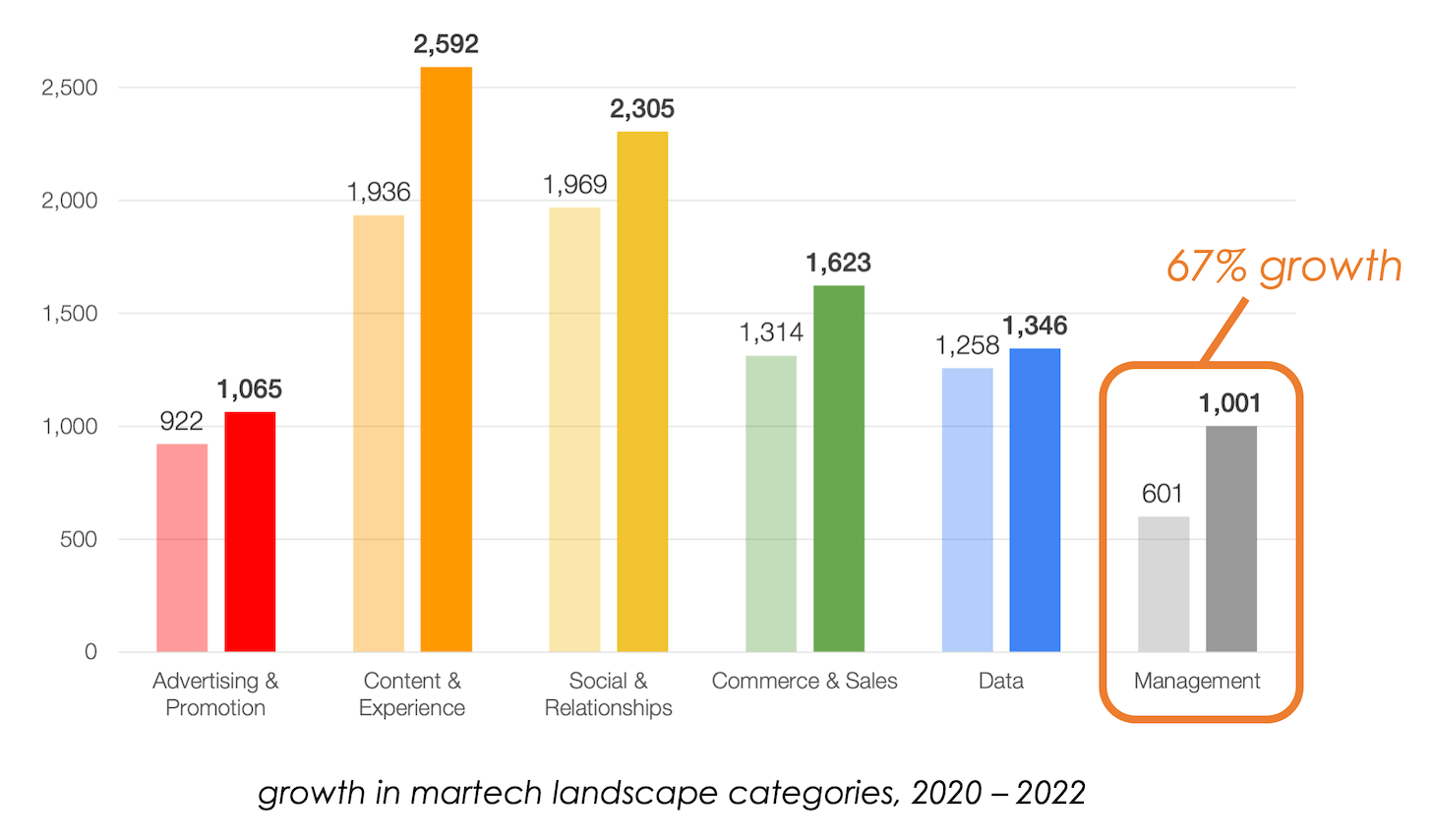
Certainly, the Administration category of the martech landscape had the premier percentage development from 2020 to 2022.
These tools have experienced a substantial effect on how function gets carried out. A lot of of them embed or empower agile (lowercase “a”) procedures. Virtually none of them use the terminology of agile marketing methodologies. But the essence of agile is there: transparency, prioritization, accountability, operate-in-development management, identification of blockers and bottlenecks.
In the meantime, I’d say that Slack and Groups — accelerated by the Great Migration to Distant Get the job done — have properly killed changed the each day stand-up for most teams.
But it’s not that the fundamental basic principle of stand-ups has long gone absent. On the opposite, these workforce communications platforms typically make it less difficult for groups to keep connected in the course of the working day in a reasonably minimal-affect manner. Problems that come up can be addressed quicker than waiting for the up coming stand-up in a preset time window that significantly fails to align with the schedules of distributed team associates.
Hey, I’m nonetheless a big fan of in-human being collaboration, and I concur some thing is lost with out it. But other things are gained. And for far better and worse, distant and hybrid groups are the new usual. In this brave new earth, Slack and Groups are a greater healthy than every day stand-ups for a lot of.
And it is not just technology. Management methods that I assume of as “point solutions” for precise requirements — in contrast to a total suite of procedures, as with formal agile marketing and advertising — have been popularized for improved cross-practical collaboration (e.g., pods outside the context of formal agile) and multi-get together conclusion-producing (e.g., DARCI designs).
The net effect? Marketing and advertising teams are getting to be extra and far more agile.
They just do not necessarily feel of their techniques as formal “agile advertising.”
From agile advertising to… advertising?
Whatsoever happened to digital advertising? It grew to become advertising and marketing.
Not mainly because promoting grew to become much less digital. Pretty the reverse. Digital grew to become so embedded in almost everything entrepreneurs were being performing that the label of the career reverted to the suggest: internet marketing. I’d simply call that a victory for the electronic promoting movement, not defeat.
Similarly, is agile marketing merely becoming… advertising and marketing?
Possibly “agile marketing” will restart its growth as an specific movement. Or possibly it will be replaced by some newly named methodology that is nearer to what DevOps has turn into in the computer software growth job. Or probably is just gets to be implicit in how contemporary advertising and marketing teams run.
Agile is as agile does.
No matter, I still think there is a big option for instructing marketing and advertising groups how to finest harness all these platforms, techniques, and procedures. There is hardly ever been a lot more demand from customers for serving to promoting teams accomplish peak overall performance by way of excellent instruction, enablement, consulting, and advisory products and services in today’s surroundings.
Does the name we simply call it actually make any difference?


